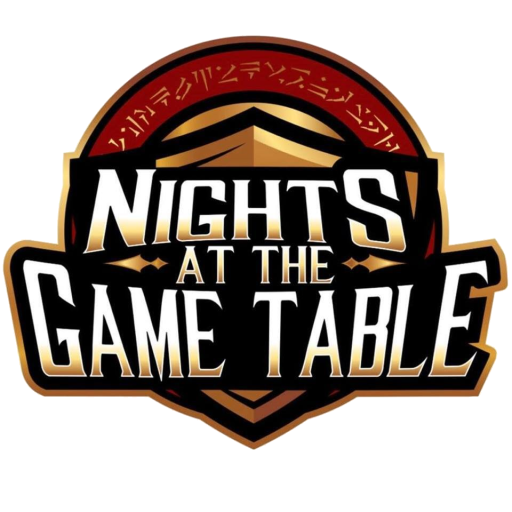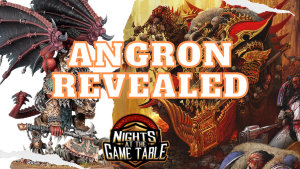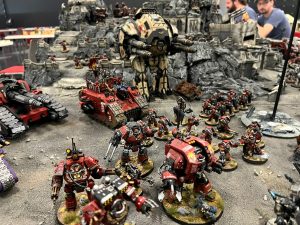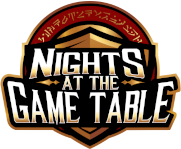Hello lads and lassies, Nick Nanavati here again to chat with you about the evidently emo space marine chapter: Raven Guard. Raven Guard are one of the most interesting and unique chapters of Space Marines because they have so many different deployment options and a highly effective yet situational mono faction trait. Many top players (myself excluded) upon an initial glance seemed to see Raven Guard and think they were the cat’s pajamas, which makes sense as top level players value flexibility in deployment and movement options very highly. However, upon some actual play testing and theory crafting it seems many top players are now split on the subject.
Let’s start from the top, Ravenguard’s mono faction rule is +1 to hit and wound against characters in tactical doctrine. It’s easy to see the enormous upside here. Sniper scouts, eliminators, even intercessors with stalker bolt rifles will turn even the hardest characters into swiss cheese… That is if they have line of sight. If you take a second and look at the game practically instead of through the lens of calculator hammer then you may find that terrain exists (shocking I know), and that realistically most armies can just hide their characters behind a line of sight blocking piece of terrain. Most “cast on friendly” psychic powers in the game don’t require line of sight, and in the case of Eldar even their offensive powers don’t either. Aura abilities also still universally work regardless of line of sight as well, so it’s very easy for a lot of armies to mitigate the effectiveness of this trait.

That’s not to say this rule is without value though. Sometimes characters don’t want to be out of line of sight, or are simply too large to be hidden for most of the game (I’m looking at you daemon princes). Other characters legitimately need to be in line of sight to function, such as most Tau characters, or the majority of TS psychers that want to be casting smite at you. Furthermore, even if a character can function from behind a wall, there’s value to forcing the enemy to one specific spot with his characters, as it means for him to move his army he has to either accept losing whatever buffs the character is providing or risk losing the character all together. Finally, some big models such as Knights, Magnus and Morty just need to be in the open to function and are realistically impossible to hide, meaning you gain almost a free win against them as your whole army walks around with a free +1 to hit and wound.
Overall I don’t think this trait is spectacular, because it of course comes with the enormous opportunity cost of forgoing all non-Raven Guard options. But is certainly worth consideration.

Let’s switch subjects for a minute and review what makes Raven Guard tick. They have really good warlord traits and really good deployment options. Basically any infantry unit can pre-game move or deep strike for 1cp each. This obviously opens up a world of opportunities as it allows to start your army in the middle of the table, or avoid an alpha strike if going second. Raven Guard also have a warlord trait to completely redeploy 1 character (the one with the trait) and 1 unit up to 9″ away from the enemy before the game begins. Most commonly, this is used on a unit of Assault centurions to start either in the middle of the table out of line of sight (if going second) or right in front of the enemy to completely lay into him on turn 1 should you be going first. Finally Raven Guard have another warlord trait to allow units within 6″ of the character with the trait to advance and charge. These are essentially all the main reasons to play Raven Guard. The question is, are they enough?
Answering that question is a bit more complicated than a simple yes/no. First I think you need to examine the format that you expect to be playing in. In some formats like NOVA and 1/2 of the ITC missions you take turns alternating with your opponent when deploying units, and then you roll for first. This means if you spend a bunch of cp on pregame moves you may find out you’re going second after the fact and then you have to move to a position out of line of sight to avoid being shot off the table instead of just bum rushing your opponent on turn 1. Additionally, you’ve potentially not put many units in deep strike as well. This is totally fine IF you’re playing against a predominantly shooting army and you have a piece of terrain in the middle of the board to hop to and hide behind, as it will effectively nullify your opponents advantage for going first all together. However, if you can’t get into a hiding spot in the middle for a variety of reasons (it doesn’t exist, your opponent already put something there and you have to be 9″ away which forces you to the open, or if you go there your opponent will simply charge you) then you will have to use your pregame move to go backwards and hide. This is “ok I guess” as it still lets you avoid the alpha strike, but how do you translate that position to a win? Your army isn’t particularly durable, and you’re seceding a lot of board control early to your opponent. Presumably you also don’t have many great fire support options as well, because Raven Guard doesn’t really offer any benefit to those types of units. This is just a really tough position to find yourself in, and to play out of.

But let’s take a look at the other formats where you deploy first and go first or deploy second and go second. This is more of an ETC style format, or missions 2, 4 and 6 of ITC. In this format you “know” if you’re going first or second based on who deployed first. If you deploy first you’re going first (or have the option to in ETC), and if you deploy second then you’re going second (barring the seize). This style allows much more play with Raven Guard since it’s much safer to commit to specific deployment strategy since you for the most part “know” if you’re going first or second. If you’re going first then you can more liberally spend CP to get right in your opponent’s face on turn 1, whereas if you’re going second you can either save the CP and hide as described above in your own deployment zone the old fashioned way, or deep strike a lot of units. Each of these options is littered with their own potential shortcomings though.
If you deploy first planning on going first (the best case scenario), you’re inviting yourself to be seized on and having to turn around. You’ll likely find yourself in the exact same difficult situation as you would in the alternating deployment mentioned above. While some players may not account for the seize because “you can’t plan for everything” those players also don’t win GT’s. On the flipside, if you deploy second and deploy cagey and in reserve, what’s stopping your opponent (who gets two full turns before your reserves arrive), from zoning out 90-100% of the table, and severely decimating or controlling where the units you’ve deployed can go? At this point I’d like to point out if you’re reserving and null deploying your Raven Guard army to cope with going second, you’re essentially playing Genestealer cult without blips to force your opponent out of your deployment zone turn 1, and without and deep strike arrival shenanigans. That’s really bad.

So the question ultimately becomes how do you cope with going second? The answer is by taking a mix of units that can punish your opponent if he comes near you on turn 1 (to prevent them from just dominating the table before your reserves arrive), but also reserving enough to punish your opponent severely should he just castle up on his side and leave you alone after you’ve been forced to castle on your side. It’s a delicate balance to strike. To do so we need to identify our options for units that can punish the opponent for coming near you, while being protected from an alpha strike, and identify the units that can threaten the enemy out of reserve.
Let’s start with the latter since that’s simpler. Effective units coming in from reserve are vanguard vets with an assortment of weapons going for rerollable 7″ charges off of Shrike and a chaplain, Assault centurions coming down with 72 hurricane bolters, and a potential 12d6 flamers if you opt to forgo Shrike and take Raven Guard Successors with Long Range Marksmen. You can of course follow those up with another 7″ charge off a Chaplain, just as you could with any assault unit. Finally, I think a unit 5 devastators with 4 grav cannons and a cherub is a highly underrated tool for Ravenguard. In other Space Marine armies you would have to put them in a pod which increases the total cost of the unit to 215 (almost a 50% increase in cost), which is a bit pricey for what is essentially a bomb you get to set off once. Not to mention that configuration comes with a drop pod that can be a huge liability for your army as it’s a model that’s basically worthless in combat, and unable to fall back. At 150 the price point becomes a lot more reasonable for the bomb, and you don’t bring along a silly pod to be used against you. This unit of course really appreciates a Chapter Master because it starts off suffering a -1 to hit for moving and shooting heavy weapons, but luckily enough Shrike is essentially a Chapter Master without having to pay the CP to make him function as one. That said, he does come with the opportunity cost of not having long ranged marksmen cents, so there are trade offs to be had.

As far as unit you can deploy on the table to deter the enemy from zoning you off the board, your options are basically limited to Assault Centurions, Assault terminators, and Vangaurd vets still. With the advance and charge WL trait, and especially so with the Hungry for Battle Successor trait Assault Cents and Termies aren’t really slow at all, and they’re durable enough to survive everything short of entire armies shooting them, which simply shouldn’t be a thing on turn 1 from a defensive position. Vanguard vets trade a significant amount of durability for a lot more speed and the best key word in the game <fly>.
Any of the above options work, and realistically some combination of them is probably the special sauce you need to be successful with Raven Guard. Allies also tons of options to a Raven Guard army as well. White Scars have superior options for deep striking and charging, ignoring overwatch, and of course Master of snares. Whereas Iron Hands offers tougher unit to start on the board, and real long range fire power in the form of character dreadnaughts and artillery. Regardless of which direction you choose with your Ravenguard army the key will be to be able to plan to go second, yet opportunistically strike the enemy should you have turn 1. You need to be able to deter the enemy from coming near you, but also punish him for staying away. It’s a very delicate balance to strike, but one that I think makes Raven Guard one of the most interesting and difficult chapters to build with, and if you can strike the balance you’re likely to see a ton of success with it.
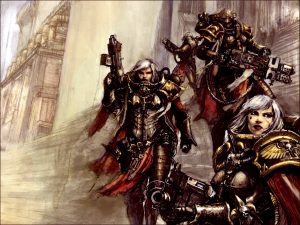
Warhammer 40k Winning Lists June 11th Edition
With summer in full swing, we see a refreshing number of tournaments kick back up globally, ranging from 3 to 7 rounds
